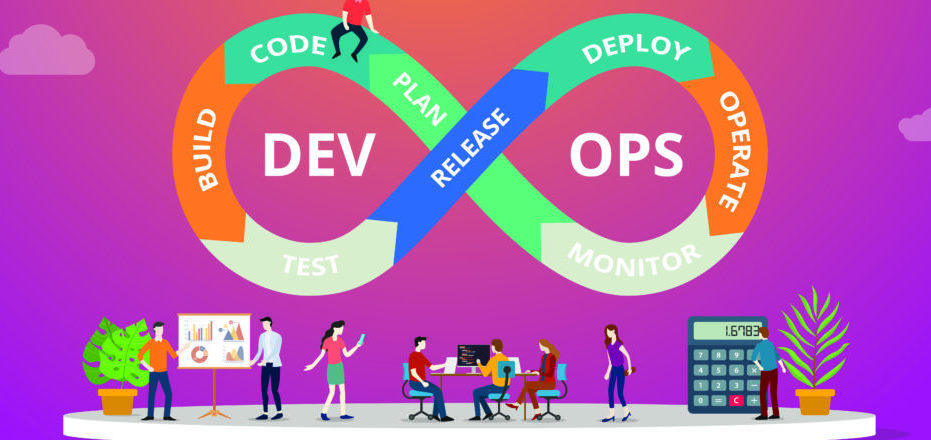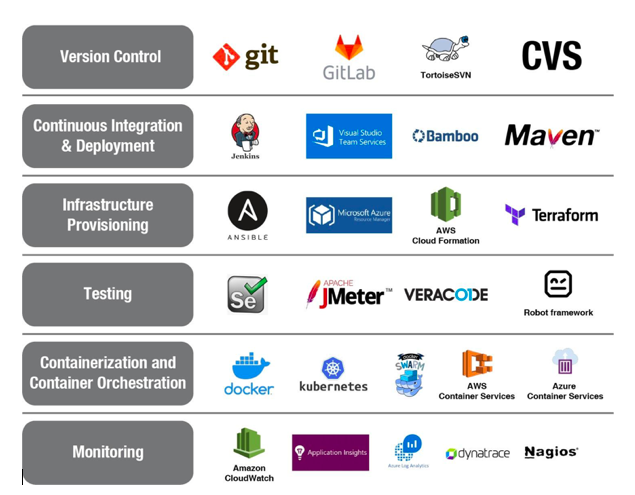How DevOps Can Accelerate Software Development Process.
According to research, the
DevOps market is expected to reach $12.85 billion by 2025.

In today’s “always-on” digital world, delivering high-performing applications or software with speed and agility is the need of the hour. For service providers, improving the operationality of software applications along with delivering features is crucial to meet consumer demands. They need to reimagine their existing delivery process, value chain, and embrace innovation with new tools, technology, and processes to outshine digital-first competitors. To support this, DevOps has become imperative in providing high-performing applications at speed.
The Evolution from Agile to DevOps
Agile’s iterative approach did help many organizations to deliver faster and high-quality software; yet, the development and operations team worked in silos. This can result in missed deadlines, delays, and bottlenecks in software development, breakdown of new features, lack of clarity on issues, etc. So, DevOps – a new approach emerged to augment the potential of
Agile software development and remove the barriers between Dev and Ops team.
DevOps is a fast-paced software delivery approach that supports the process of agile software development methodology. It improves the collaboration between the Dev and Ops team, accelerates the deployment cycles, and enables enterprises to deliver high-quality applications with speed and accuracy without compromising quality. In addition to bringing collaboration between teams, companies need to understand the tools and practices crucial to the DevOps lifecycle.
Continuous Integration and Continuous Deployment
Continuous Integration and Continuous Deployment is an integral part of the DevOps lifecycle. These two approaches allow integrating and deploying the code without a delay which improves the frequency and quality of software delivery. It cuts the development time from months or weeks to days or even hours. Application changes are done faster and frequently reach the production environment. Thus, accelerates the prototype development cycle and reduces deployment time.

Continuous Integration
Continuous Integration (CI) refers to a software development practice of integrating code into a central repository frequently so developers can get feedback on the changes immediately upon committing code and can fix the errors quickly. The main aim of continuous integration is to improve software quality and reduce time to market.
Continuous Delivery
Continuous delivery is a software development practice that can change the code, or fix bugs quickly and deploy all code into a testing environment or a production environment after the build stage.
Continuous Deployment
Continuous deployment is one step ahead of continuous delivery. The code change that deployed in the production stage is directly released to the customer without human intervention. Only the failed test will abort the deployment process, leading to human intervention. The automation helps to deploy the written codes in real-time.
DevOps relies heavily on automation. Thus, a well-defined DevOps automation toolchain is essential to automate end-to-end software development and deployment processes. There are numerous tools available to simplify CI/CD pipelines.

DevOps services for software development apply to various use cases such as application modernization, cloud-native application, application integration, or mobile application.
Quick software delivery: DevOps empower organizations to deliver new software with speed and quality by implementing the right methods.
Enhanced Agility: DevOps enables organizations to achieve scalability and agility for better business outcomes
Reduced Manual Efforts: With DevOps comes automation, which ensures robust and reliable deployments, lower failure rates, labor cost, and faster recovery from incidents
Efficient Sprint Cycles: With effective collaboration between cross-functional teams facilitated by automated feedback and continual monitoring enables to synchronize the production release and delivery cycles.
Minimal Defects: DevOps reduces the error rate by continuous improvement in software delivery to make a viable solution.
Enhanced Collaboration: DevOps removes the barrier between operations and the development team. This brings transparency and efficiency in the software development lifecycle.
DevOps has become an integral part of any cloud solution in today’s technology world. In order to make the cloud solutions journey smooth, efficient and effective, one must follow DevOps principles and practices.
Related Article:
https://www.embedded-computing.com/home-page/how-devops-can-accelerate-software-development-process
 In today’s “always-on” digital world, delivering high-performing applications or software with speed and agility is the need of the hour. For service providers, improving the operationality of software applications along with delivering features is crucial to meet consumer demands. They need to reimagine their existing delivery process, value chain, and embrace innovation with new tools, technology, and processes to outshine digital-first competitors. To support this, DevOps has become imperative in providing high-performing applications at speed.
In today’s “always-on” digital world, delivering high-performing applications or software with speed and agility is the need of the hour. For service providers, improving the operationality of software applications along with delivering features is crucial to meet consumer demands. They need to reimagine their existing delivery process, value chain, and embrace innovation with new tools, technology, and processes to outshine digital-first competitors. To support this, DevOps has become imperative in providing high-performing applications at speed.

 DevOps services for software development apply to various use cases such as application modernization, cloud-native application, application integration, or mobile application.
DevOps services for software development apply to various use cases such as application modernization, cloud-native application, application integration, or mobile application.

